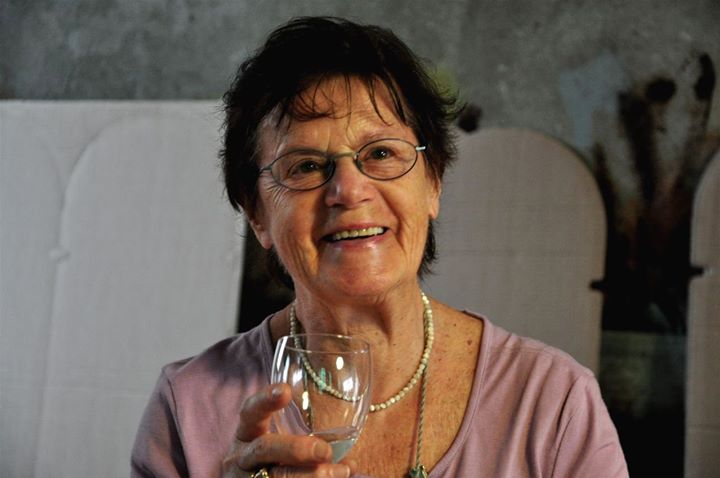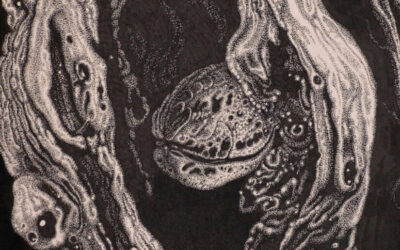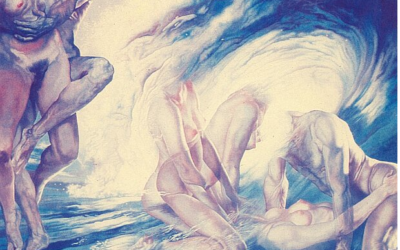Blog
Read blog posts about the life and pictorial oeuvre of Bosnian painter Mihridžan Kulenović Mimica.
L’Arte di Mimica Kulenović – a cura di Maria Campitelli
Si firma “pittore accademico” Mimica Kulenović, straordinario artista bosniaco, evidenziando, e dunque valorizzando l’iter formativo intrapreso, che gli ha consentito di raggiungere l’altissima qualità tecnica nella stesura delle sue pitture. Tecnica non certo disgiunta da profondi contenuti e da un’intensa “felicità” artistica, cioè da uno spirito capace di elevare la tecnica al grado sublime dell’arte.
La sua abilità disinvolta nella realizzazione di proposte visive complesse, sia in pittura che nei disegni, decisamente difficili (danzatrici viste nell’insolita prospettiva da sotto in su, la copiosa produzione di cavalli, splendidi animali notoriamente non facili da riprodurre nella loro scattante vitalità) pone l’artista adiacente ai massimi modelli forniti dalla storia dell’arte, dal Rinascimento al Barocco.

Maria Campitelli, Critica e Curatrice d’Arte Contemporanea.
Le tecniche impiegate sono varie. In primis l’olio su tela e in questa sezione, dominata dal ciclo “Genesi”, le opere appaiono di una speciale luminosità fondata su fresche tonalità dal bianco all’azzurro al lilla, contrapposte a un giallo paglierino, (e proprio un’opera di questa serie reca vistose tracce di schegge di bombe della sciagurata guerra balcanica degli anni ’90 poiché la casa a Sarajevo di Kulenović si trovava in un posto avanzato rispetto al fronte bellico).
Vi predominano composizioni corporee con travolgenti fondali d’acqua, e nell’ideazione, un fantasioso, dinamico surrealismo, come nei vitalissimi cavalli, contrassegnati da una misteriosa noce volante che compare in molte altre composizioni.
Poi numerose sono le opere ad inchiostro e ad inchiostro colorato, sempre caratterizzate da un’abilità disegnativa d’eccezione. Ad inchiostro colorato è realizzato un altro ciclo “Genesi” – una ricorrenza significativa – che innesca un articolato percorso evolutivo/simbolico dalla materia informe alla consistenza corporea fino alla definizione del volto.
In sostanza un’intensa proposizione della vita in fieri. E qui applica, come in altri lavori a china, quella sua particolare tecnica esecutiva puntinata – cioè le forme prendono corpo sulla carta o sulla tela attraverso una successione infinita di punti ravvicinati che permettono morbidezze e sfumature non diversamente raggiungibili, rivelando una costanza ed una pazienza davvero certosine.
Nel ciclo “Le grazie”, più tardo, realizzato con un acrilico materico, corposo, la visione cambia sul piano cromatico, la gamma si orienta sul verde e sul blu, un fantastico fondale marino in cui danzano le “grazie” gravide. Ancora un inno alla vita che s’intreccia con giochi di radici, cioè all’idea dell’origine e della crescita, la trasformazione; un dinamismo inarrestabile.
L’origine è un tema che si definisce anche attraverso altre raffigurazioni, come i cippi di cimiteri mussulmani, perché Mimica, attraverso ascendenti parentali aveva remoti legami col mondo ottomano. Cioè una visione complessa, plurale della vita e del mondo emerge da questa intensa produzione artistica, inglobando anche un attento sguardo alla natura – vedi i numerosi disegni con tronchi d’albero dalle robuste cortecce rugose, la misteriosa noce indagata nelle complicanze dei suoi gherigli – dove anche la morte, realisticamente evocata dal conflitto balcanico, trova il suo posto, con esasperata precisione iconografica, nel ciclo Scream, ad inchiostro.
E il mistero surreale s’interseca a tutto ciò: (da Shakespeare) “Ci sono più cose in cielo e in terra di quello che sanno le nostre filosofie.”
The Art of Mimica Kulenović – by Maria Campitelli
Mimica Kulenović, extraordinary Bosnian artist, presents himself as “academic painter”, thus highlighting and giving importance to the educational path undertaken, which allowed him to achieve the highest technical quality in the drafting of his paintings. A technique certainly not detached from profound contents and an intense artistic “happiness”, that is, a spirit capable of elevating the technique to the sublime degree of art.
His effortless ability to create complex visual proposals, both in his paintings and drawings, undoubtedly difficult (dancers seen in the unusual perspective from below, the copious production of horses, splendid animals notoriously not easy to reproduce in their impetuous vitality), places the artist next to the greatest models provided by the history of art, from the Renaissance to the Baroque.
The techniques used are various. First and foremost, oil on canvas and, in this section, dominated by the “Genesis” pictorial cycle, the artworks exhibit a special brightness revolving around fresh shades ranging from white to blue to lilac, contrasted with a straw yellow, (and it is a painting of this series that bears conspicuous traces of grenade shrapnel from the unfortunate Balkan war of the 90s, since Kulenović’s house in Sarajevo was located in an advanced position with respect to the war front).
Bodily compositions with overwhelming backdrops of water predominate, and in its conception, an imaginative, dynamic surrealism, as visible in the extraordinarily lively horses, marked by a mysterious floating walnut that appears in many other compositions.
Then there are numerous ink and colored ink artworks, always characterized by an exceptional drawing ability. Drawn with colored ink is another “Genesis” cycle – a significant recurrence– which triggers an articulated evolutionary/symbolic path from the shapeless matter to the bodily consistency up to the definition of the face.
Essentially, an intense proposition of life in progress. And here he applies, as he does in other artworks with ink, the execution of that particular dotted technique of his – that is, the forms take shape on paper or canvas through an infinite succession of close points that allow softness and nuances not attainable otherwise, revealing a truly painstaking persistence and patience.
In the later “Graces” cycle, made with a material, full-bodied acrylic, the vision changes on a chromatic level, the range is oriented towards green and blue, in a fantastic seabed where the pregnant “graces” dance. Once again, a hymn to life intertwined with games of roots, that is, with the idea of origin and growth, of transformation; an unstoppable dynamism.
The origin is a theme that is also defined through other representations, such as the tombstones of Muslim cemeteries, because Mimica, through parental ancestors, had remote ties with the Ottoman world. Therefore, a complex, plural vision of life and of the world emerges from this intense artistic production, also incorporating a careful look at nature – see the numerous drawings of tree trunks with robust wrinkled bark, and the mysterious walnut investigated in the complications of its kernels – where even death, realistically evoked by the Balkan conflict, finds its place, with exasperated iconographic precision, in the drawings with ink of the Scream cycle.
And the surreal mystery intersects all of this: (from Shakespeare) ”There are more things in Heaven and Earth, than are dreamt of in our philosophy.’’



